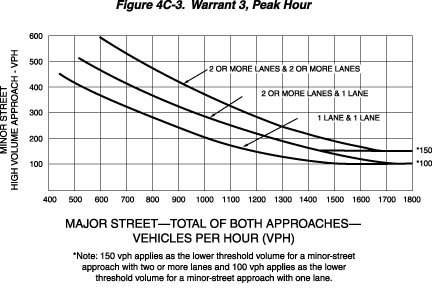
Figure 4C-3 shows the points at which the need for a traffic control
signal shall be considered if an engineering study finds that for one
hour (any four consecutive 15-minute periods) of an average day, the vehicles
per hour on the major street and the corresponding vehicles per hour (VPH)
on the higher-volume minor-street approach fall above the curve for the
existing combination of approach lanes (see Section 4C.04 for further
details). The figure displays three curves—one for each existing
combination of three approach lanes: one lane and one lane, two or more
lanes and one lane, and two or more lanes and two or more lanes.
The table below shows the approximate VPH on the major street and corresponding
VPH on the minor street for each combination of approach lanes.
|
One lane and one lane |
Two or more lanes and one lane |
Two or more lanes and two or more lanes |
| VPH on the major
street (Total of both approaches) |
VPH on the minor street
(Higher volume approach) |
VPH on the major
street (Total of both approaches) |
VPH on the minor street
(Higher volume approach) |
VPH on the major
street (Total of both approaches) |
VPH on the minor street
(Higher volume approach) |
| 1800 |
100 |
1800 |
100 or 150* |
1800 |
150 |
| 1700 |
100 |
1700 |
100 or 150* |
1700 |
150 |
| 1600 |
100 |
1600 |
120 or 150* |
1600 |
170 |
| 1500 |
100 |
1500 |
145 or 150* |
1500 |
180 |
| 1400 |
120 |
1400 |
155 |
1400 |
220 |
| 1300 |
130 |
1300 |
190 |
1300 |
250 |
| 1200 |
150 |
1200 |
220 |
1200 |
285 |
| 1100 |
175 |
1100 |
250 |
1100 |
340 |
| 1000 |
200 |
1000 |
285 |
1000 |
370 |
| 900 |
245 |
900 |
325 |
900 |
425 |
| 800 |
285 |
800 |
360 |
800 |
475 |
| 700 |
325 |
700 |
420 |
700 |
540 |
| 600 |
360 |
600 |
460 |
600 |
590 |
| 500 |
420 |
500 |
Not available |
500 |
Not available |
| * Note: 150 vph applies as the lower threshold volume for a minor-street
approach with two or more lanes and 100 vph applies as the lower threshold
volume for a minor-street approach with one lane. |
Return to Chapter 4C
| 
